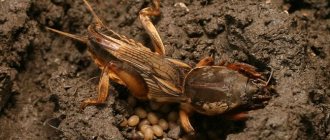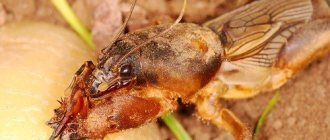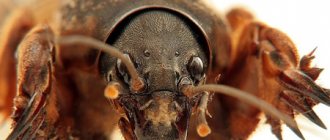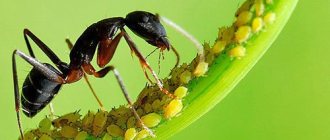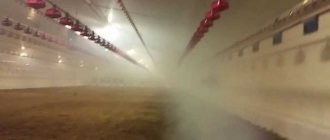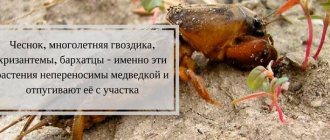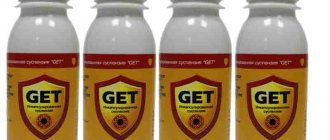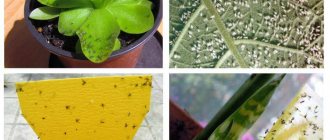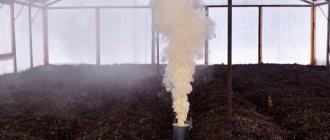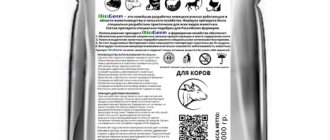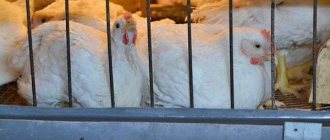Mole crickets are scary not only because of the rapid destruction of the crop, but also because of the difficulty of breeding. These creatures have a high adaptive capacity, so choosing an effective remedy can be difficult. Regent 800 from the mole cricket is a fundamentally new drug that allows you to fight pests in the garden. It is based on an innovative complex to which insects have not yet had time to adapt.
Bait recipes and instructions for use
Since the mole cricket does not eat the upper parts of plants, the poison must be “delivered” to its habitat. There are recommendations to place bait in the entrance holes and cover everything with soil. This method is simple, but less effective than making grooves with poisonous grain.
How to make grooves
Grooves are dug around the beds to a depth of 10-15 cm. Prepared poisoned bait is placed in these grooves. The mole cricket has two options: eat the poison and try to break through it to the plants.
Since Regent is a dual-action insecticide, the destruction of pests is guaranteed. The grooves are covered with earth and covered with something hard on top. Although the manufacturer advertises the chemical as harmless to mammals and birds, it is not worth the risk. And birds and domestic dogs will eat porridge and boiled grain with pleasure.
Lures
Boiled grain serves as bait. In crushed form it is called porridge, in whole form it is called boiled grain. But the essence is the same.
Porridge
0.5 of any coarsely crushed cereal is well boiled. The porridge should be very thick so as not to spread when adding liquid. Pour 1 tbsp into the finished porridge. l. unrefined sunflower oil (which is now not found in stores). The oil is needed for the smell that will attract the mole cricket. You need to add 1 ampoule of Regent to the mixture and mix everything well. You can actually put the porridge in mole cricket holes, since it will also cover the entrance. But porridge is not suitable for grooves.
Corn
Prepared from poorly digestible grains:
- corn;
- barley;
- wheat.
Per kilogram of grain you will need 2 ampoules of Regent. The grain is boiled until softened, but so that it does not burst or spread. Whole grain porridge should remain crumbly.
Excess water is drained, and 3 tbsp is added to the grain. unrefined sunflower oil and Regent ampoule. Mix the whole mass well and leave for several hours so that the poison is absorbed into the grain. Before scattering the bait into the groove, the grain is mixed again.
The bait can also be laid out under manure or sprinkled when planting seeds and seedlings between rows. But in the latter case, it is better to use another recipe, with peas.
Peas
1.5 kg of whole peas are boiled for about 20 minutes. It is necessary that the peas remain intact, but soften a little. After boiling, allow to cool. Excess water is drained, and 2 ampoules of Regent are poured into the peas. Leave to infuse for one and a half days. Stir occasionally, as the poison will definitely flow down. Before use, add 150 g unrefined oil to the peas.
You should not scatter poisoned peas around the garden. Animals can eat it. Just like grain, peas are laid out in grooves or buried between rows. If the mole crickets are completely tormented, you can scatter the peas in the holes. It's more convenient and safer than spreading porridge there.
Preparation and use of a working solution for the Colorado potato beetle
Each package contains detailed instructions that will tell you how to properly prepare the solution and then apply it. First you need to prepare the sprayer for uniform spraying.
To exterminate the Colorado potato beetle you need to follow this scheme:
- Fill a ten-liter bucket of water and pour 5 ml of the drug from the ampoule. Mix well.
- The powdered regent is also used in the form of an aqueous solution. To do this, following the instructions, pour the contents of the package into a bucket of water. Stir until completely dissolved.
Spray the bushes only with fresh solution. Basically, 1 ampoule or 1 pack of granules diluted in 10 liters of water is enough for 1 hectare of potato beds.
Preparing the product yourself
Everyone asks the question - how to effectively poison mole crickets without negative consequences for themselves and their garden crops. Mole cricket poison is sold ready-made, or you can prepare it yourself.
The simplest, most accessible and no less effective version of a toxic substance is boric acid. A tasteless and odorless substance can be bought at a pharmacy in the form of a solution or in a specialized store as a powder. Boric acid penetrates the integument of insects, but has a greater effect when it enters the stomach.
Do-it-yourself mole cricket poison acts on the insect’s nervous system, blocks nerve impulses, causes paralysis, followed by inevitable death. Retains properties for 2 weeks, then neutralizes under the influence of light and ambient temperature.
Boric acid from mole crickets The effect of use can be noticed 2 weeks after applying the poison. The toxic substance accumulates in the pest’s body and, when a lethal dose is reached, leads to an irreversible result. Since the poison is eaten by an adult insect and fed to the larvae, a chain reaction and mass death of mole crickets is observed.
Operating principle
The basis for the drug "Regent" is a powerful insecticide fipronil, which uses a mechanism to block the transmission of impulses in the nervous system of the Colorado potato beetle, mole cricket, ants, fleas, bedbugs and other pests. This effect leads to the development of paralysis in the insect, as a result of which it dies.
The drug enters the body of cockroaches and beetles in two ways.
- When directly consumed as food by a cockroach, the insecticide within an hour leads to toxic damage, paralysis of cells of the nervous system and death of the insect.
- The contact method of infection is through the paws and chitinous cover. Even without eating the product, the insect is exposed to the “Regent”, which disrupts the nervous connections of the body. This method of infection speeds up the process of killing insects. This occurs due to the fact that an infected cockroach brings poison on its cover directly to the nest, passing the drug directly to all its relatives.
The combination of both methods brings maximum effect, completely ridding the room of the population of cockroaches and beetles within a few days. The instructions included with the drug officially confirm this rate of removal of insects.
Why am I getting rid of the mole cricket?
I always treat garden pest control responsibly. After all, the inattention and carelessness of a gardener often threatens with the death of cultivated plants and the destruction of a significant part of the harvest.
The mole cricket is not the last enemy here. It is also known as cabbage grass, top grass, earthen crayfish, and mole cricket. Based on its body structure and chitinous “shell,” this insect can be confused with a small cancer. The pest sometimes reaches the length of a human palm. But, unlike aquatic inhabitants, it has a pair of wings that allow it to overcome significant distances and water obstacles.
The insect is armed with tentacles and powerful jaws. This “property” makes it unusually voracious - in a season the top can destroy several hectares of plantings. The pest is very prolific - over the summer, two individuals leave numerous offspring, whose number goes into the hundreds.
I do not allow mole crickets to appear on my site for a variety of reasons. The insect gnaws through the root system of various plantings, spoils root crops, and destroys planted seeds. It does not disdain leaves and stems of young plants, and destroys beneficial earthworms.
Regulations for the use of insecticide Regent
| Culture | Harmful object | Recommended consumption rate | Terms of use | Frequency of processing |
| Food potatoes | Colorado beetle | 0.02-0.025 kg/ha | Spraying during the growing season | 30 (2) |
| Winter wheat | Bread ground beetle | 0.03 kg/ha | Spraying seedlings | 30 (1) |
| Wheat | Bug harmful turtle, pyavitsa | 0.0225 kg/ha | Spraying during the growing season | 30 (1) |
| Barley | Pjavica | 0.02 kg/ha | Spraying during the growing season | 30 (1) |
The most effective store-bought products
Experienced gardeners recommend using “heavy artillery” only in extreme cases: if folk remedies have not justified themselves or when a site is massively populated by mole crickets. Among store-bought drugs, there are 2 categories: chemicals and biological products.
Insecticides
Such drugs help to quickly exterminate pests. Available in granular or liquid form. The active substance penetrates the insect’s body, blocks the functioning of the nervous system, which leads to subsequent paralysis and death of the cabbage plant. Most products involve step-by-step application:
- in the spring, a decade before sowing, when planting plants in the ground; or during the appearance of sprouts;
- in summer, when pests mate;
- in the fall to kill the remaining adults who are preparing for the winter and are especially in need of food.
The list of the most effective insecticides includes the following:
- Rubit is the most popular Russian-made product based on fipronil. May be with the prefix Phenaxin Plus or Rofatox. It is a mixture of green and brown granules. The composition has been expanded with flavoring additives and aromas. The granules are buried in the soil at a depth of 5–7 cm or in the pest holes found, and sprinkled with earth on top. After eating the product, the death of the mole cricket occurs within 3 hours. The properties of the drug last for 2 weeks.
- Phenaxin Plus is a domestic drug in granules. The package contains 200 or 400 g of green granules with a specific odor. 100 g is enough to process 10 acres. The death of the garden pest is observed after 3 hours.
- Animedvedka is a product in different packaging. Microgranules destroy mole crickets at all stages of development. A 250 g package is designed to process 25 acres. Also effective against the cockchafer.
- Medvetox is the active ingredient diazinon. Characterized by a very unpleasant odor. Does not affect insects in the larval stage, but quickly copes with adults. The manufacturer does not recommend poisoning mole crickets 2 months before harvest, so it is advisable to use Medvetox in the spring.
- Thunder is one of the cheapest means to kill mole crickets; a package costs about 27 rubles, which is enough to treat 7 m². Provides protection for 14 days, with heavy rainfall the validity period is reduced. The maximum effect is observed after 5 days. It is recommended to carry out primary treatment in the spring 7 days before sowing.
- Medvegon is an organophosphate insecticide with DV diazonin. It is used both in open ground and in greenhouses. Economical consumption: 20 – 30 g of granules are enough to treat 10 m². Absolutely does not harm soil microflora and earthworms. It is effective not only against mole crickets, but also against garden ants and wireworms.
- Votafox - aka Metaphos. Two active ingredients: imidacloprid and bifenthrin help to quickly defeat the mole cricket. The product is available in the form of a solution or powder. Before planting seedlings, the roots are dipped in Votafox solution. Baits are also prepared from boiled cereals, sunflower oil and insecticide.
- Parachute is practically an analogue of Votafox. Shows the greatest effectiveness when adding poison to bait
- Regent 800 is a very powerful drug for getting rid of garden and garden pests. Contains fipronil, chlorophos and permethrin. To combat mole crickets, baits are prepared from porridge with the addition of Regent.
In addition to the listed means, you can poison the mole cricket with the following drugs:
- Rembek;
- Antibug;
- Bi-52;
- Karbofos or Carbit;
- Grizzly;
- Metarizin;
- Terradox.
Biological products
Biological products can also effectively destroy cabbage grass, but at the same time they do not cause any harm to either the soil or beneficial insects. Their significant disadvantage is the price, which is higher compared to pesticides.
- Nemabakt (600 rubles) - are predatory nematodes that infect larvae with bacteria, which leads to decomposition of the insect’s insides.
- Boverin (from 100 rubles per bottle) - infects the pest with spores of the fungus Beauveria bassiana, which provokes its subsequent death.
- Ecokiller (from 370 rubles for a 1-liter bucket) is not quite a biological product, but without toxic substances. The active substance is the shells of diatoms. They damage the chitinous cover of cabbage plants, which leads to their dehydration and rapid death.
Characteristics of the insecticide Regent, VDG
Active ingredient: fipronil (800 g/l).
Preparative form: water-dispersible granules (WDG).
Crops: wheat, barley, potatoes.
Recommended application rate: 0.0225-0.03 kg/ha (wheat), 0.02 kg/ha (barley), 0.02-0.025 kg/ha (potatoes).
Spectrum of action: cockroaches, bed bugs, Colorado potato beetles, leopards, mole crickets, striped flea beetles, grain flies, aphids, grain ground beetles, locusts.
Application: spraying during the growing season.
Waiting period (frequency of treatment): 30 (1) - for grains, 30 (2) - for potatoes.
Packaging: plastic bottles 48 x 0.1 kg.
How to use it correctly
Regent for the Colorado potato beetle
Regent is used in the form of an aqueous solution. After preparation, the liquid quickly loses its effectiveness, so the Regent should be diluted immediately before use. The instructions for the poison indicate that the finished mixture is not intended for storage and requires immediate use.
The manual also states that spraying against the Colorado potato beetle should be carried out in dry, windless weather. During rainfall, the use of the chemical is prohibited, as its effectiveness is greatly reduced. In a closed package, the remedy for the Colorado potato beetle can be stored for 2 years from the date of release. The optimal air temperature is +12-25 degrees Celsius. It is recommended to use the drug in the morning before 10 am or in the evening after 18:00.
Regent for the Colorado potato beetle instructions for use:
- Pre-calculate the required amount of solution. The necessary information can be found on the packaging.
- Open the ampoule or package and pour its contents into the prepared container.
- Add 10 liters of water.
- To stir thoroughly.
Poison Regent is applied to plants using a spray bottle
It is important that the product gets on every bush and leaf. Only in this case can you count on high processing efficiency
Regent for the Colorado potato beetle
Disadvantages of Regent 800
To prepare the solution, you can use ampoules or granules. In this case there is no big difference. But you need to make a slightly more concentrated solution than indicated in the instructions for use. You will need a lot of solution, since it is necessary to wet the ground to a depth of at least 10 cm. Or better yet, 20 cm, in order to be sure to reach the passages dug by the mole cricket. This is another reason why it is undesirable for Regent to use “area” when destroying mole crickets. The price of the chemical reaches up to $10 per kilogram, and the drug is sold in 10 kg bags. The cost of 100 g of concentrate for home use starts at $5.
The recommended dose of powder when spraying plants is 5-10 kg/ha. When watering, the consumption will increase several times.
There is one more nuance: nowhere in the reviews do buyers mention the fight against mole crickets. They complain that it does not work against flying insects (this is understandable) and that Regent does not even work on cockroaches. But there is no guarantee that people did not buy a fake. Therefore, it is difficult to determine whether a complaint is justified or a case of falsification.
What kind of drug is Regent?
Initially, Regent 800 was used to treat cultivated plants against garden pests. It was later noticed that the substance also has a detrimental effect on cockroaches.
Composition of the drug Regent
The main active ingredient of the insecticide is fipronil, a pesticide belonging to the second class of poisons. It is included in the composition in a ratio of 800 g per 1 kg of the drug and is characterized by long-term toxicity. Additionally, the poison contains permethrin (10%) and chlorophos (15%), which are converted in the intestines of the pest under the influence of stomach acid into very toxic substances.
Release form
Regent is available in the form of:
- powder (0.5 g bags or 100 g plastic jars);
- emulsions (in 5 mg ampoules or 100 ml bottles).
To disinfect a room from pests, poison in any form requires dissolution in water.
Terradox
The remedy for mole cricket Terradox is an insecticide with a prolonged effect. It is used to protect vegetable, berry crops, and fruit seedlings from pests. Characteristics of the chemical:
- Release form: granular product packaged in 100 or 200 g.
- Active ingredient: diazinon. Its concentration is 40 g per 1 kg of the drug.
- Duration of action: Terradox protects the treated area from mole crickets for 2–4 weeks.
- When to use: the insecticide is applied in the spring before planting garden crops or before winter. Laying in the ground should be carried out in the morning or evening in calm weather. When it rains, the poisonous effect is significantly reduced.
- Method of application: scatter Terradox (20 g per 10 m²) and bury it in the soil by loosening.
- Toxicity: Terradox is not harmful to humans or pets.
- Price: 100 g – 40 rubles; 200 g – 65 rub.
- Shock wave therapy - cost and reviews. Indications for shock wave treatment and contraindications
- Diet for diseases of the gastrointestinal tract
- How to plant strawberries
How to deal with mole crickets in the country?
There are many classical and modern methods of combating mole crickets, but since pests can adapt to certain conditions and drugs, many of them are considered not very effective. It is simply impossible to say exactly which method is the most or least effective, because for each individual climate, soil and individual mole cricket species, the conditions for destruction will also differ.
Experts recommend starting the fight against cabbage weed with the simplest methods, so as not to destroy the soil or pollute it with chemicals, and especially not to waste your personal budget. But radically minded summer residents, who have experienced from their own harvests what a mole cricket is and its activities, are ready to take the most active actions at the first sign of this insect. We are not ready to tell you which method to choose, but we are always happy to offer many methods from which you can choose the most suitable one in terms of conditions, medications, financial and time costs.
How to deal with mole crickets in the country: the most effective methods
Advantages of Regent insecticide
- Flexibility of insecticide application - works effectively in a wide temperature range.
- A long period of protective action is at least 3-4 weeks.
- Rapid initial effect on the pest.
- There is no pronounced specific smell.
- High efficiency at any stage of pest development.
- Pronounced, reliable contact and intestinal action.
- Profitability of application.
- Ability to cope with large numbers of insects.
- An important tool in an anti-resistance strategy is the control of pests that are resistant to insecticides from other chemical classes.
- Easy to prepare and use the solution.
- It is not phytotoxic if the regulations for use are followed, and does not affect the taste of the crop.
- Low cost per hectare processing.
Prevention
Following the famous catchphrase that all means are good in war, summer residents try to use a whole arsenal of drugs against the mole cricket. But we must remember that it is much easier to prevent this “beast” from entering the site than to then drive it out, set traps, lay out poison, and water the beds with completely unsafe chemicals.
So, real tips on how to prevent the appearance of cabbage weeds:
- compliance with agricultural technology for each crop;
- digging the soil in autumn and spring;
- thorough weeding;
- loosening row spacing;
- maintaining distances when planting plants, eliminating dense plantings;
- cleaning of plant residues;
- good relations with neighbors and comprehensive joint pest prevention;
- acquisition of high-quality seed material, disinfection and careful selection.
The rules and recommendations are simple, but they will save you from labor-intensive and not always effective pest control. If a mole cricket appears, you cannot hesitate; you must immediately announce an ultimatum to it and remove it from the garden using all the means suggested above.
Natalia Severova
Features of storage of insecticide Regent
You can only use freshly prepared Regent working solution, as it cannot be stored. Remains of unused solution and packaging of the drug must be disposed of with household waste.
The Regent insecticide should be stored at a temperature of 0...+25°C away from food products, aromatic substances and animal feed, as well as out of the reach of children. During storage, the drug must be protected from moisture, heat and direct exposure to sunlight. If the drug is stored for a long time at temperatures above 40°C, the properties of the product may change.
It is very important to observe the expiration dates indicated on the packaging. If the storage rules are followed, this drug will retain all its qualities.
Security measures
The Parachute insecticide is considered safe for humans, but this does not mean that personal protective equipment can be ignored when using it.
First of all, you should consider how the poison acts on the mole cricket itself. After the poison penetrates the body, the insect’s nervous system is affected and the pest crawls out of the hole onto the ground surface. After this, the death of the insect occurs and only the bodies of the pests remain in the garden. They all need to be carefully collected and burned over an open fire, since mole cricket bodies left in the garden can cause poisoning and even death of birds and animals that eat them.
We should not forget about personal protective equipment when preparing poisoned baits. Regardless of whether you are cooking porridge or preparing liquid poison, you should mix the chemical with water or grains in a separate container not intended for storing drinking water or food. In addition, the ready-made mixture must be used immediately after preparation, since it loses its effectiveness during storage.
It is best to mix the drug and lay out poisoned baits while wearing gloves and a mask so that the active substance does not accidentally enter the body. After completing the procedure, be sure to wash your hands and face with soap.
You need to be especially careful when preparing porridge balls with poison. They should not be left unattended so that the poisoned product is not accidentally eaten by children or pets. If you still have some of the poison left after laying out the balls around the area, it needs to be disposed of. To do this, dig a hole, pour the remaining product into it and cover it with earth. Leaving poison on the surface is strictly prohibited, as it can be eaten by poultry or animals.
Purpose of insecticide Regent
Regent, VDG is a contact-intestinal insecticide with a long period of protective action, designed to combat a wide range of household and garden insect pests indoors and outdoors.
The insecticidal drug Regent was developed to combat agricultural pests and subsequently began to be successfully used to combat household insects.
- In agriculture, the insecticide Regent is effectively used against various pests from the orders Coleoptera and Orthoptera (Colorado beetle, bug bug (younger instar larvae), ground beetle, leech, locust), as well as against soil-dwelling pests (mole cricket). The scope of use of the Regent insecticide is limited by its high toxicity.
- For the purposes of sanitary, medical and household disinfestation, the Regent insecticide is used to destroy synanthropic cockroaches, bedbugs and ants in residential, industrial, food, children's and medical facilities.
- In veterinary medicine , the insecticide Regent can be used against fleas and ticks due to the systemic action of fipronil.
What is Regent?
A broad-spectrum insecticide developed in Germany by the BASF concern. It has no structural analogues. Differs in 2nd class of danger to humans. Produced in Russia, France and Hungary. Available in the form of powder, water-dispersible granules in plastic bags or in the form of a solution in ampoules.
The drug contains 3 components:
- fipronil;
- chlorophos;
- permethrin.
Fipronil is the main active component and belongs to the class of phenylpyrazoles. Characterized by contact-intestinal action. The substance enters the body of pests from the intestines in case of ingestion of treated plants or from the environment through the chitinous shell. In adult beetles and larvae, the passage of nerve impulses is disrupted, and vital activity slows down. The mechanism of action is based on inhibition of receptors sensitive to the oil amino acid. Dysfunction of the motor and respiratory systems of the body gradually develops.
Chlorophos and permethrin are pesticides; they act as excipients in the composition of the drug.
The drug is safe for soil microorganisms and earthworms. However, it is toxic to bees.
Properties of the drug
The use of "Regent" as a chemical for the destruction of the Colorado potato beetle, mole cricket, ants, fleas, bedbugs and other insects reveals the following positive qualities of this drug.
- Impact effectiveness. When prepared properly, the product can control very large insect populations.
- Lack of chemical aggressiveness. The insecticide does not have a pronounced unpleasant odor, and even a highly concentrated solution does not have a detrimental effect on furniture, carpets, and fabrics.
- Economical. The cost of the drug "Regent" is no more than 100-120 rubles.
- Convenience of preparing the solution and its use. Immediately after dilution with water, the product is ready for use.
- Presence of residual effect. 100% of the colony of adult Colorado potato beetles, mole crickets, ants, fleas, bedbugs and other pests die within a few days after application, and the hatched larvae will be neutralized by the drug even after a much longer time. The residual effect will not allow insects to re-occupy the room and area.
The product is produced by the German chemical concern BASF, which has a large number of factories in many countries around the world, including Russia. Domestic analogues of the drug, which also cause paralysis of the nervous system of the Colorado potato beetle, mole cricket, ants, fleas and bedbugs, are “Korado”, “Imidor”, “Image”, “Tanrek”.
AfterText #1
Instructions for use of the Medvedka Parachute
The instructions provided by the manufacturer indicate that to prepare a working solution of the chemical, it should be diluted in water for further spraying of the green parts of plants affected by pests.
In the case of the mole cricket, this method will not be effective, since this insect gnaws on roots and root crops, and not leaves and stems protruding above the soil surface. Therefore, we will give you other instructions for diluting Parachute. It is specially adapted to the characteristics of the insect and leads to its rapid death.
How to breed
A parachute really helps in the fight against mole crickets, but for this you need to properly prepare a poison based on it. First of all, you need to make insect bait. Any crumbly porridge (rice, oats, millet or peas) is used as bait.
After this, you need to add the poison Parachute to the finished porridge (Figure 2). On average, to eliminate a mole cricket from an entire area, you need to cook more than 1 kg of porridge, and for this amount of cereal you will only need one sachet of chemical. The porridge with poison must be thoroughly mixed, and then a few tablespoons of vegetable oil must be added to it. Its smell will quickly attract the mole cricket to the poisoned bait.
Next, you need to make small balls from the porridge and place them around the area in this way:
- Small holes are made in the ground, no more than 5 cm deep.
- A ball of poisoned porridge is placed in each hole and sprinkled with earth.
- If the mole cricket spreads massively, you can scatter the poisonous porridge in small depressions between the rows. To prevent birds and pets from being harmed by the chemical, it is advisable to cover such areas with a board or any other dense material.
- You can spread the bait directly when planting seedlings. In this case, poisoned porridge balls are placed at a distance of 15 cm from the plant stem.
Figure 2. Cooking poisoned porridge
If you know exactly where the mole cricket's hole is, you can place bait directly into it. You can also increase the effect of using the product and simply dilute the Parachute in water, and after mixing thoroughly, pour it into the hole.
Average price, where to buy
The advantage of the drug is its availability. Manufacturers package the substance in packages of different sizes. This makes it possible to purchase the product in the quantity necessary to treat the premises at minimal cost. So for bags with 0.5 g of the substance you will have to pay from 15 to 25 rubles. A package of emulsion or an ampoule can be purchased for 60-70 rubles.
Inna, Orel:
“I got cockroaches. I can't stand it! I go into the kitchen, preparing for battle. I started researching how I could get rid of them. I didn’t want to pay a lot for chemicals, but I wanted it to be reliable. I found out about Regent, read the reviews, and bought it. Well, in general, there is a result, there are no cockroaches!”
Considering that Regent 800 gives good results when used in agricultural areas, helping to get rid of ants, Colorado potato beetles and other pests, French manufacturers produce packages of 100 g granules. Such a bottle of the drug is more expensive (from 2800 to 3700 rubles), however relieves the owner of a summer cottage from constantly replenishing supplies of the substance.
Buyers do not have to search for a long time for the necessary product. Regent 800 is easy to buy in hardware stores, as well as on the websites of various online resources.
Handling Precautions
The drug is moderately toxic; before spraying, it is necessary to exclude the presence of children and animals in the area. You should wear long sleeves, cover your face with a mask and goggles, and protect your hands with gloves.
The drug is moderately toxic; before spraying, you must cover your face with a mask and goggles, and protect your hands with gloves.
After completing the treatment, you need to wash your hands, soak your clothes for several hours, then wash them in hot water. All containers must be washed thoroughly. The remaining solution is burned outside the garden area.
After spraying, leave the treated area for 10 hours. The drug should not be sprayed in the immediate vicinity of water bodies and apiaries.
If the drug is swallowed or inhaled, consult a doctor. In case of contact with mucous membranes or skin, the product must be washed off with water.
Treatment is carried out no later than a month before harvest to prevent poisoning. Spraying with Regent is effective both when an adult is detected in a potato field and when the larvae hatch. Timely treatment with the product will improve the quality of the crop.
Source: SadBezProblem.ru
Advantages and disadvantages
The main advantages of the Regent insecticide:
- there is no pronounced specific odor;
- able to cope with large numbers of insects;
- economical;
- high efficiency;
- ease of preparation and use of the solution;
- The effect of the drug continues even after spraying: insect larvae will die even after a long time.
Among the disadvantages are:
- Class II toxicity for humans and animals;
- isolation of the room is required for the treatment period;
- Parasites do not die immediately.
Rules for using poison
The right time to use pesticides against mole crickets is late spring and early summer. During this period, the pest forms clutches of eggs. Therefore, a chemical attack brings good results. Most insecticides are mixed with the soil and loosened with a rake.
Spraying solutions are added to the irrigation system or manually processed plants and soil.
All insecticidal preparations are divided into three categories:
- Granular chemicals. Use in bulk or as part of baits.
- Water-soluble substances. Apply to tubers, leaves, loosened soil using a sprayer. Such insecticides include Votafox.
- Bioactive drugs. They contain fungal spores that are deadly to mole crickets and other insect pests.
Some chemicals are quick-acting, others are long-acting.
Combination with other methods
For reliable and long-term protection of the cultivated area from the invasion of parasitic insects, an integrated approach is used. It consists of combining disinfestation with pesticides with the parallel use of other methods of exterminating pests. They attract natural enemies to the site, plant plants with repellent odors, and use environmentally friendly homemade recipes.
Ultrasonic repellers
The operating principle of such electronic devices is based on irritating insects with acoustic wave radiation that is not detected by the human ear. As a result, orthoptera beetles leave the territory where they have become uncomfortable. This method of combating garden parasites is often used along with treating the cultivated area with pesticides.
Ultrasonic repellers are effective not only on mole crickets, but also on moles, shrews, and small rodents. If they are attracted to the site specifically to eat orthopteran beetles, this method is undesirable.
Folk recipes
The most common home methods for killing parasites are creating baits and food traps. Dust, iodine, washing powder and any household chemicals are used as toxic substances. Making a simple trap will not take much time. A plastic bottle or glass jar will do.
It is coated with honey or molasses and placed vertically in the place of greatest concentration of parasites. Baits with stale bread also work well. It is soaked in an insecticidal solution and vegetable oil, the smell of which attracts insects. Poisonous plantings are made in beds with vegetable plants.
General description and composition
Regent is one of the most popular means for exterminating cockroaches in private homes and apartments. But this drug can also be used to treat agricultural areas, as well as in professional pest control.
Regent is effective not only against cockroaches, but also against ants, bed bugs, flies, mosquitoes and even hymenoptera insects. Initially, the drug was created specifically for the treatment of agricultural plants.
Regent 800 destroys a colony of cockroaches completely in 3-7 days if the parasites lack resistance
Regent is produced in 100 gram bottles, as well as in 0.5 gram bags and ampoules. The drug is water-dispersible granules (highly soluble in water). Composition of Regent against cockroaches:
- fipronil is the main active ingredient, an insecticide of contact-intestinal action in a concentration of 800 grams per kilogram;
- catalysts;
- stabilizers.
The disadvantage of the drug is its slow acceleration. After insects are infected, their death occurs within a few days, unlike most other insecticides, which lead to the death of infected parasites within 3-7 hours.
The average cost of Regent against cockroaches is 15 rubles per ampoule/bag. One ampoule of Regent is enough to fully treat the room. You can purchase the product in agricultural stores and insecticide stores.
How does Regent act on insects, and does it help? (+video)
Regent is one of the most powerful insecticides, so its effectiveness in removing domestic cockroaches is very high. Resistance (immunity) to the components of Regent in cockroaches occurs extremely rarely.
If after 1-3 treatments there is no acceptable result, we can talk about the presence of resistance in cockroaches. In this case, use another insecticide with a completely different composition (otherwise there will be no effect).
Is the product dangerous for humans and pets?
Fipronil, which is part of Regent, is a powerful and toxic insecticide that can negatively affect the health of people and pets. In high concentrations, this substance can even cause life-threatening complications.
However, in the amount in which fipronil is used in Regent, there is no threat to the health of people or pets
But this is only relevant if the product is used correctly in compliance with all precautions.
Treatment of the premises with Regent must be carried out wearing personal protective equipment. Be sure to wear rubber gloves, a respirator or even a gas mask (if you need to process a large area), a change of clothes, and safety glasses.
Processing should be carried out in a well-ventilated area. The room should be ventilated both during the procedure and for several hours after (preferably within 12-24 hours). During ventilation, no one should enter the room without protective equipment.
To minimize the risks of intoxication, 3-6 hours after treating the room, wipe the door handles, tables and chairs with a rag soaked in a soap and water solution. You also need to wipe any other surfaces that you often come into contact with in everyday life, as particles of the drug may remain on them.
